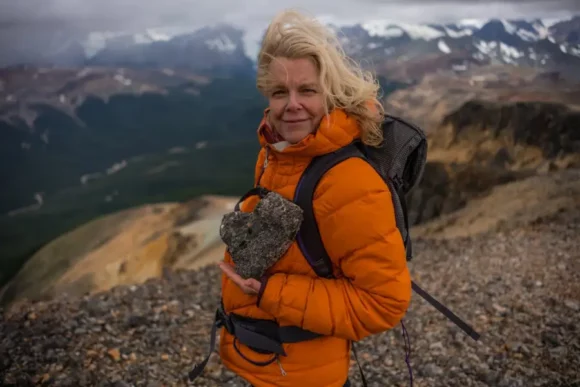Watching Wild Life by Jimmy Chin and Elizabeth Chai Vasarhelyi for New Scientist, 14 June 2023
Don’t be fooled by that Grateful Dead concert near the beginning. Wild Life is not about happy-go-lucky hippies who fell backwards into money.
It’s about three major outdoor apparel companies, and the minds that founded and controlled them. And it’s the story of how two of those minds, Doug and Kristine Tompkins, spent their middle years engineering the largest ever private land donation in history, all to save diverse and rapidly degrading ecosystems.
Kristine (then McDivitt) met rock-climber Yvon Chouinart in 1965 and went on to help him turn his blacksmithing business (turning out pitons and other climbing gear) into a world-leading outdoor brand, Patagonia. Chouinart conceived Patagonia as an “anti-corporation”, campaigning to preserve the environments its products let you explore.
by the early 1990s Chouinart, despairing of the garment industry’s environmental footprint, had started promoting advertising copy that all but urged customers not to buy his clothing.
That was the moment Kristine decided there had to be more to life. She quit her role as Patagonia’s first CEO. She wanted something “wild”. Something “outrageous”. And by marrying Doug Tompkins, she got it.
Doug and his wife Susie were long-time friends and rivals. They were the ones who got Grateful Dead to play at the opening of their first store, called North Face. Later, they founded Esprit. Now Doug was divorced and out of the business, living in Chile, haemorrhaging money on experiments in sustainable agriculture and trying to buy his way into the conversation game, one acre at a time.
He had set up home in Chile, was widely mistrusted, and didn’t seem to care. Once, when word went round that he had set a bounty on a man hired by salmon farmers to shoot sea lions, he had to hide out in the US embassy.
Chile was emerging from the dictatorship of General Augusto Pinochet. The last thing ithe country needed was to see its land bought up and (many suspected) parcelled off by an American tycoon. Chile is narrow — a strip of land between the Andes and the coast, just 90 km wide at its thinnest point. Doug’s plans for a public nature reserve not only looked unfamiliar; they also split the country in two.
Doug died in 2015 from hypothermia following a sea kayaking accident. His death, Kristine says, nearly finished her. Instead she dedicated herself to expanding on what he had started.
She has triumphed. For every acre Kristine has donated up to 2018, Chile’s federal government has set aside nine acres of unused land. 17 wildlife parks have been created, covering 14.7m acres. That’s more than three times the size of Yosemite and Yellowstone combined. About the size of Switzerland. And the work continues, in Chile and in neighbouring Venezuela.
Wild Life is billed as a love story. Kristine’s presence on camera, her passion, and her continuing grief, are visceral.
The directors are out to capture breathtaking shots of unfamiliar coastal and mountain ecosystems. They’re out to assemble an intimate portrait of a remarkable couple through interviews and archive. They are not in the business of asking difficult questions about the role of capital in conservation. But Kristine proves more than capable of asking a good number of those questions of herself. She’d be the first to tell you that the adventures of Tompkins Conservation over the last quarter-century have been anything but plain sailing.
Ultimately, Wild Life succeeds because it treats the Tompkins’s success as a laudable highlight of the conversation movement — not some sort of blanket solution to all the world’s problems.
We’re not going to save the world by buying it. But someone saved a corner, and filled it with giant anteaters, jaguars, red-and-green macaws, and giant river otters, and that is worth remembering, and should be, for all of us, both a provocation and a challenge.

